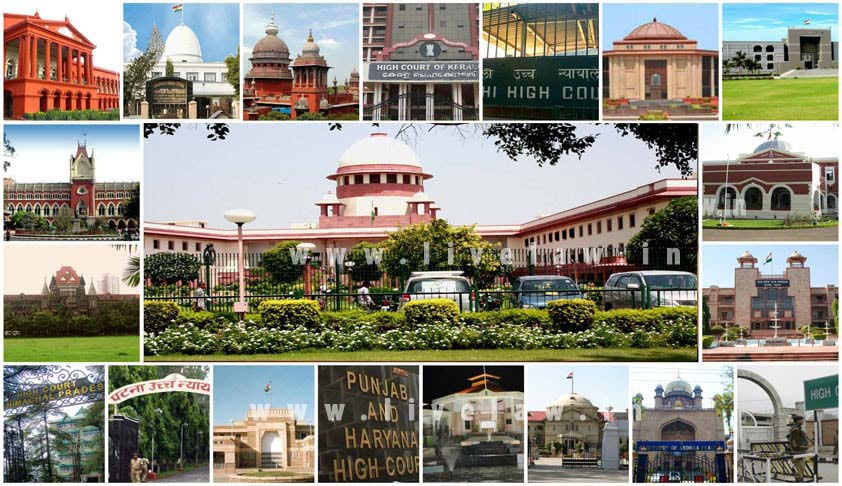Over 40% Vacancies In High Courts Causing Denial Of Justice
Amit A. Pai
10 Feb 2017 5:54 AM GMT
“25. Backlog in courts has become a national problem. The adjudicatory process is being blamed for not equalling itself to the challenge of the times. There is a general complaint that the judicial system is on the verge of collapse. It is, therefore, the obligation of the constitutional process to keep the system appropriately manned. We have found no justification for the sluggish move...
“25. Backlog in courts has become a national problem. The adjudicatory process is being blamed for not equalling itself to the challenge of the times. There is a general complaint that the judicial system is on the verge of collapse. It is, therefore, the obligation of the constitutional process to keep the system appropriately manned. We have found no justification for the sluggish move in such an important matter.”
These words of the Supreme Court are as relevant today as these were over 25 years ago when they were written, especially when litigation has increased manifold. A lot has been written and said as to whether the judicially-invented collegium system of appointment of judges to the constitutional courts is correct or otherwise over the last two years, including a lengthy judgment in defence of the system and the “independence of the judiciary”.
Former CJI TS Thakur and the government have been vocal about appointments. Second senior-most judge of the Supreme Court Justice Jasti Chelameswar even famously refused to attend the meetings of the collegiums, protesting against its certain aspects. It is well known that there are several permutations and combinations that go into the appointment of judges. Although there may be several reasons, including the MoP, for the slow pace of the appointments to the high courts, the only loser in the bargain is the litigant.
It is no secret that appointments to the high courts have come to a near state of paralysis for the past two years, and a few appointments have been made in one high court or the other. The other feature with these appointments is that mostly only recommendees from the lower judiciary are being appointed, while those from the Bar are ominously kept ‘pending’.
So much so, a writ petition has been filed in the Supreme Court to fill vacancies in the high courts. The real picture, however, is put out by the Ministry of Law and Justice on its website on the 1st day of every month.
As per the last count, of the total sanctioned strength of 1,079 judges, there are as many as 433 vacancies in the 24 high courts in India. Both Karnataka High Court and Hyderabad High Court have over 50% vacancies. The Karnataka High Court, with three benches, has only 30 judges, as opposed to the sanctioned strength of 62, whereas Hyderabad High Court has 27 judges, out of the sanctioned strength of 61.
The burden of vacancies is felt by litigants in other high courts like Allahabad High Court (77 vacancies out of 160), Bombay High Court (32 out of 94), Calcutta High Court (34 out of 72), Delhi High Court (22 out of 60), Chhattisgarh High Court (11 out of 22), Patna High Court (23 out of 53) and, Punjab and Haryana High Court (38 out of 85).
It is commendable that Madras High Court has a near 75% working strength, with 57 judges as opposed to the sanctioned 75.
Five of the high courts (Hyderabad, Calcutta, Jharkhand, Madhya Pradesh and Patna) have acting chief justice for several months. Although, with eight recommendations made recently for the appointment of chief justices, these will change.
An even more disturbing trend is the fewer number of women judges in India. As per the last statistics put out by the Department of Justice, there are only 67 woman judges amongst the total working strength of 646 judges in India, which is an abysmally low 10.37% of the working strength of judges and 6.20% of the sanctioned strength.
Although it is encouraging to know that the chief justices of Bombay and Delhi high courts, as well as the senior-most judges of these high courts, and the acting chief justice of the Calcutta High Court are women, the encouragement is wiped out to know that eight high courts (Chhattisgarh, Jammu and Kashmir, Himachal Pradesh, Jharkhand, Manipur, Meghalaya, Tripura and Uttarakhand) in the country have no woman judge.
Although Rajasthan High Court has two women judges, both of them have been transferred from Punjab and Haryana High Court. It is in vain that one complains that there are not enough women judges in the Supreme Court, if the cause is not addressed effectively.
It is beyond reasonable belief that there are not enough women advocates, with unquestionable integrity and ability, who are not elevated to the Bench. It is, however, encouraging that the youngest judge in the country today is a woman, Justice Anitha Sumanth of Madras High Court.
There is an overall vacancy of just over 40% of the sanctioned strength at the high courts, which is mounting the pendency of cases, and causing, not just a delay, but a denial of justice.
There is an urgent need for the Hon’ble Chief Justice of India and the government to ensure that the appointments go through smoothly, so as to ensure that there is no hindrance in the dispensation of justice.
 Amit A. Pai is a lawyer practicing in the Supreme Court of India.
Amit A. Pai is a lawyer practicing in the Supreme Court of India.
[The opinions expressed in this article are the personal opinions of the author. The facts and opinions appearing in the article do not reflect the views of LiveLaw and LiveLaw does not assume any responsibility or liability for the same]
This article has been made possible because of financial support from Independent and Public-Spirited Media Foundation.


